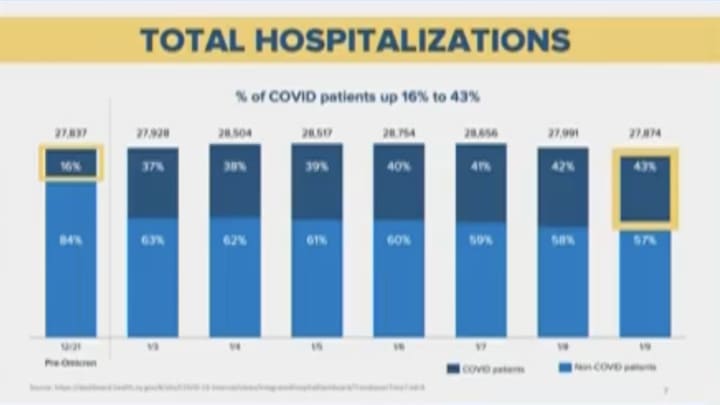During her latest COVID-19 briefing in New York City on Tuesday, Jan. 11, Gov. Kathy Hochul said that the state “might be cresting over a peak,” following a record number of new cases in recent weeks.
“Just as we saw at the outset, the virus is changing,” she said. “And we knew the (Omicron variant) characteristics early on showed that it’s not as severe, but it spreads so quickly … And that’s why testing is so important. You find out if you’re negative or positive.
“If you’re positive, stay home and stop spreading it to others. If you’re negative, go out and conduct your normal activities in a mask,” she continued.
“This is, to me, a glimmer of hope in a time when we desperately need that.”
Hochul specifically praised downstate New York, citing falling numbers following an unprecedented rise of new daily infections throughout the region.
“There’s no date as far as the metrics go (in regards to lifting any mandates),” the governor said. “Last fall we were in a very good place … New York City had a 1 percent infection rate for weeks and weeks, and then we were worried about Buffalo popping at 10 percent. Those were the days.
“We could not have foreseen the scale that the virus swept the state. But there is an end in sight.”
Moving forward, Hochul said that they will continue to monitor the spread of the virus by region, noting that some areas upstate where the vaccination rate is lower are facing the threat of overextending hospital capacity.
“We’ve been talking about regional differences, and right now, downstate looks like it’s improving at a faster rate,” she added. “I’ve been very flexible and tried not to have statewide requirements unless there was a statewide purpose.
“So we’ve seen other areas adjust earlier and once it's sustained, we can make regional decisions about when we can lift certain things.”
Click here to follow Daily Voice Pound Ridge and receive free news updates.



